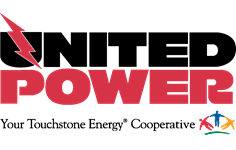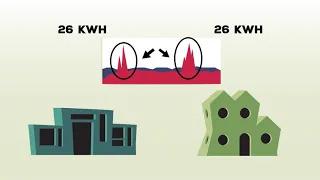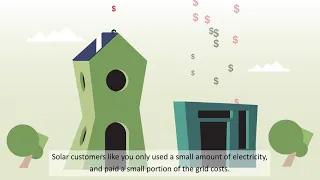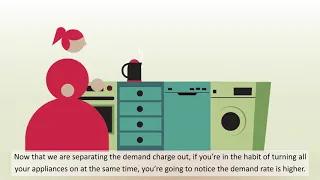United Power rates include an energy (kWh) component and a demand (kW) component. This rate structure breaks apart the traditional blended rate to charge each member more fairly for their use and impact on the local grid. The following information will help members better understand demand related to their energy use.
So, what is demand?
Demand (kW) refers to the maximum amount of electrical power that is being consumed at a given time, as opposed to energy (kWh), which is the amount of power used over a period of time.
The Demand Charge line item that appears on your monthly bill represents the 15-minute interval with the highest amount of electricity used during that billing month – measured in kilowatts (kW).
FOR EXAMPLE: Get in the driver’s seat of your car for a moment. Energy (kWh) would be what is recorded on your car’s odometer – a measurement of total miles. Demand is like your speedometer – measuring the speed at which the energy flows. The demand charge is like the highest recorded “miles-per-hour” speed that month.
Demand Rate FAQs
Electric rates have traditionally been a blend of costs. The cost of fuels to generate electricity, the cost to deliver the energy to your home, the cost to the cooperative to maintain and repair the system, even the cost of billing is included in the rates you pay – and we all share in the overall cost for power and peak charges.
However, there have always been members whose usage patterns impacted our system more than others. So, some members may be paying less than their actual impact and others are paying more than they should – even when they are doing all the right things to keep costs lower.
Our advanced metering technology allows us to access more information about how individual members use power. We have information about every member’s energy consumption in 15-minute increments, and we can actually determine how individual households are impacting our system. This additional information allows us to break apart the various components of your electric bill and charge you more fairly for the two largest drivers of your electric consumption: your impact on the electric system (your demand) and amount of power you consume (your energy use).
Your electric bill includes your total demand, and the time and date when your highest usage interval occurred. The Demand Charge reflects your highest 15-minute interval of energy consumption during that billing period, which is measured in kilowatts (kW). The timestamp provided on your bill is the end of the 15-minute interval of highest usage. So, for example, if your bill states your demand occurred on 01/15/2020 at 5:45 p.m., your highest interval of usage was on January 15th from 5:30-5:45 p.m. Line items associated with both your Demand and Energy consumption reflect the total measured usage and total cost of each component. Learn how to read your bill here.
Your Online Account and United Power app offer you a monthly and daily look at your past and current energy usage, and a comparison of energy usage from this time last year. Log in anytime to view your energy and demand on an easy to read platform. Learn how to register for your online account or download the free app.
The Power Portal is United Power's free member resource that allows them to view detailed energy consumption data and overall usage history. Members can view monthly, daily and hourly energy use by 15-minute intervals, and presents your demand with an easy-to-see orange line. The Power Portal provides the information you need to help you pinpoint the exact day and time you hit your demand. Learn more about using the Power Portal here.
Major appliances used for heating and cooling, cooking, and laundry are your home’s largest energy consumers and have the greatest impact on your overall energy usage and demand. The more appliances or devices you run at the same time, the higher your electricity demand.
Depending on your home, family size and appliances, your demand will vary, and your highest demand season may be different from other members.
- In the summer months your demand may be higher due to air conditioning, pool pumps, fountains, hot tubs, irrigation motors or power tools and compressors.
- In the winter, demand is driven by electric heat or space heaters, stock tank heaters, heat lamps, electric fireplaces, and increased usage for holiday lighting, cooking and entertaining.
Understanding the wattage ratings of your household appliances will help you take even more control of your energy bill. Listings of common wattage ratings can be found online or you can measure your appliance wattage usage by using tools like a Kill-A-Watt monitor.
View our Demand Calculator to see how using appliances and electronics can add to your demand or view this sheet to calculate the combined wattage of common household appliances.
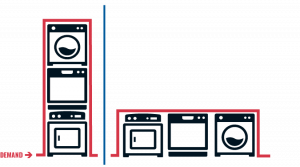 Staggering the use of major appliances is the easiest way to manage your energy and demand charges. When you consistently stagger the use of major appliances so they don’t run at the same time, you can keep your demand low. Make it easier by utilizing technology that helps you remember to offset energy use like timers, delay start settings, mobile apps and programmable thermostats.
Staggering the use of major appliances is the easiest way to manage your energy and demand charges. When you consistently stagger the use of major appliances so they don’t run at the same time, you can keep your demand low. Make it easier by utilizing technology that helps you remember to offset energy use like timers, delay start settings, mobile apps and programmable thermostats.
Here are some helpful tips to manage your demand:
- Run the dishwasher after you’re done cooking dinner. Even better, use the delay start
feature so your dishwasher runs later at night while everyone is in bed. - Start your clothes washer before you go to bed in the evening, and then run the
dryer after everyone has finished cooking breakfast the following morning. - Grill outside or use small cooking appliances if the air conditioning is running.
Bonus: you won’t overheat your kitchen on a hot day. - Set your electric vehicle charger to run after you’ve turned off other appliances for the day.
Small changes in how you use your household appliances can help you see the corresponding affect to your energy and demand, and United Power’s demand rate can put you in the driver’s seat of your electric bill.
